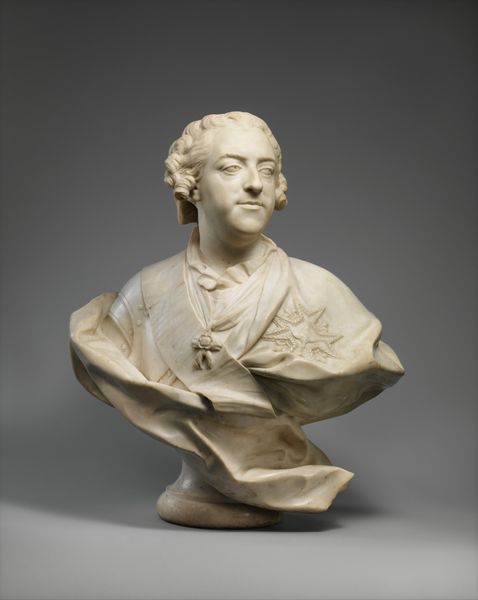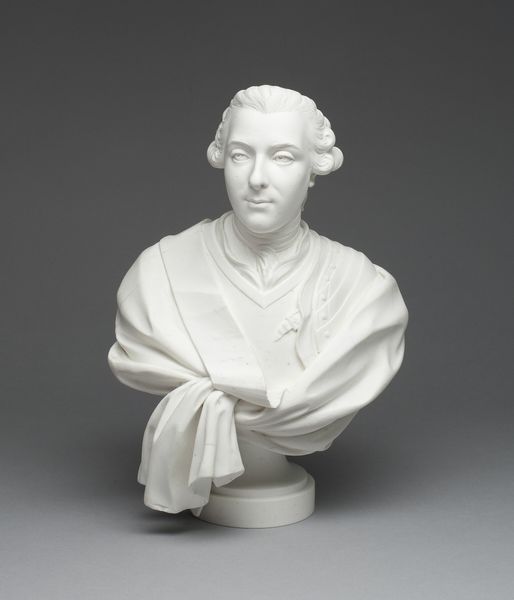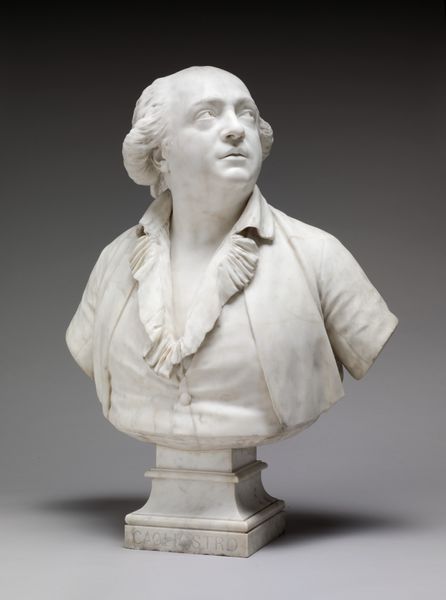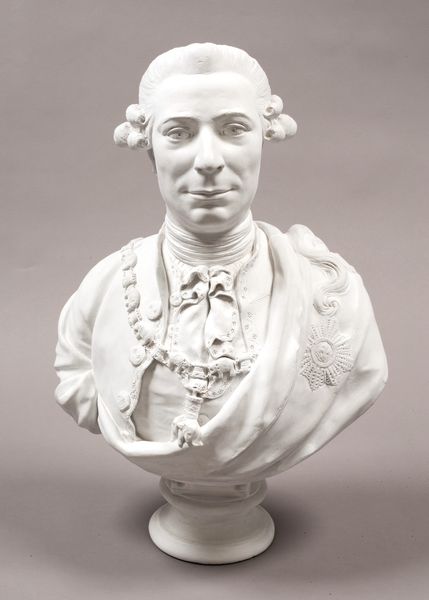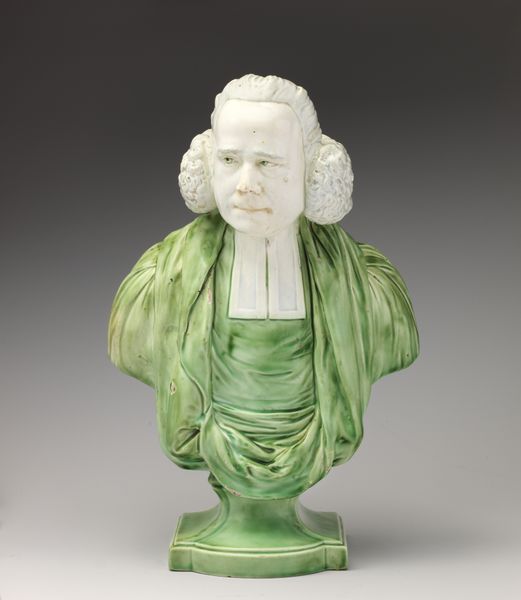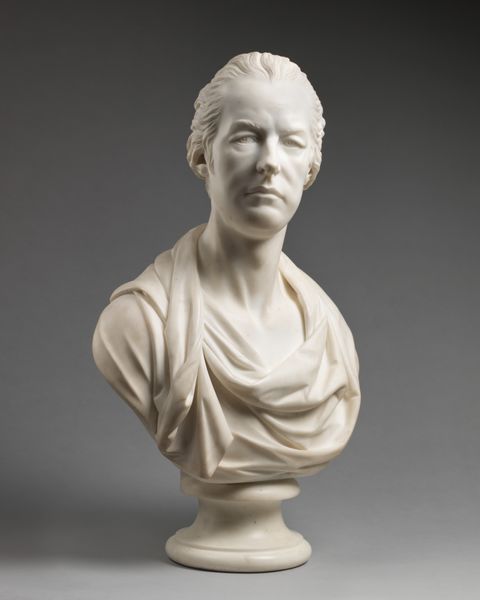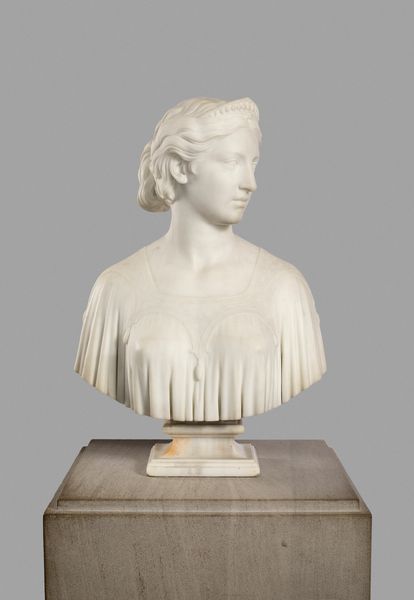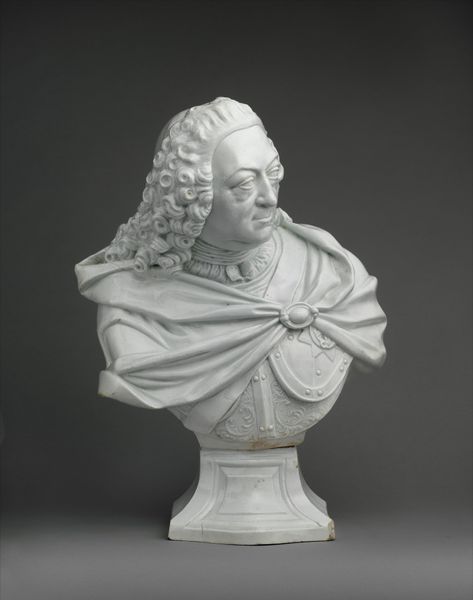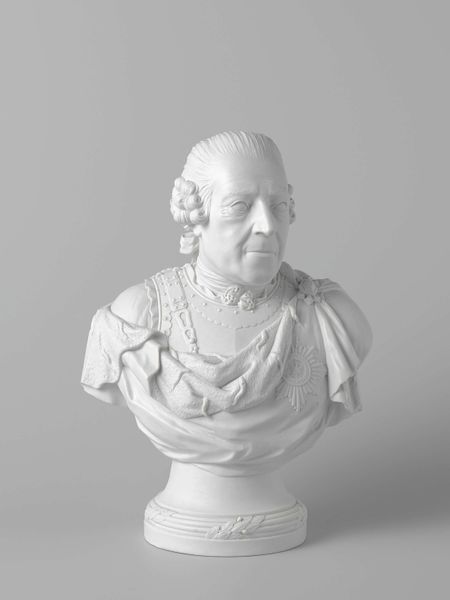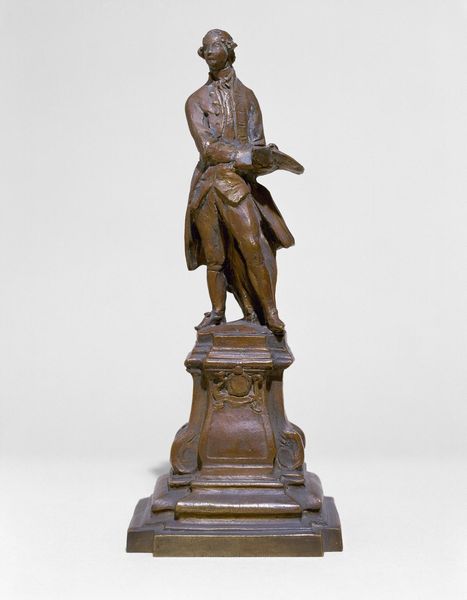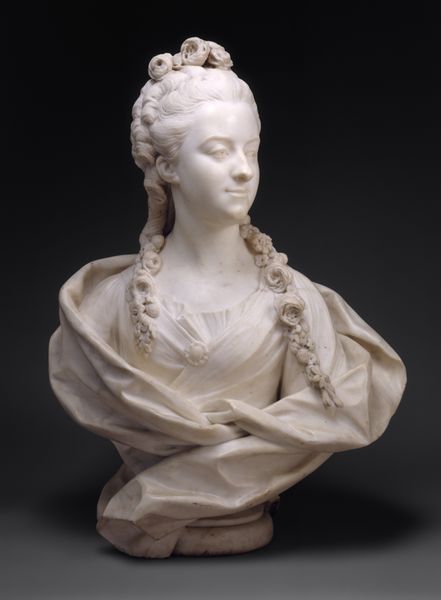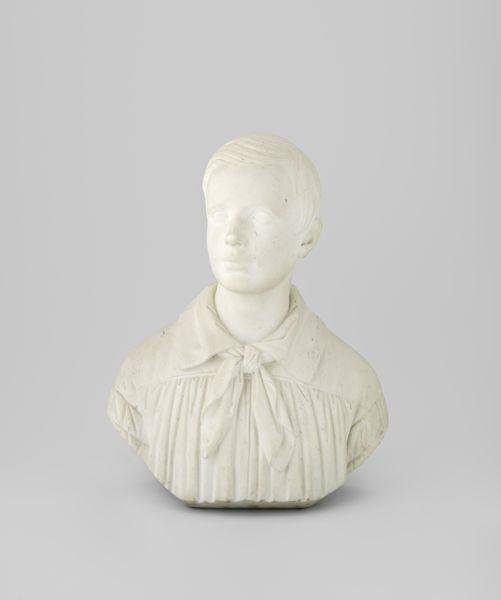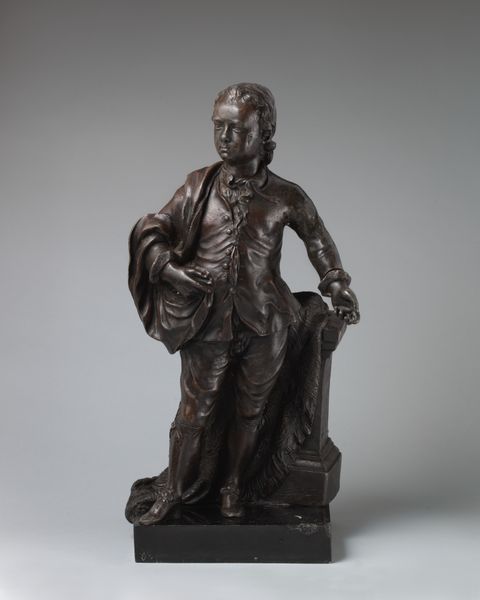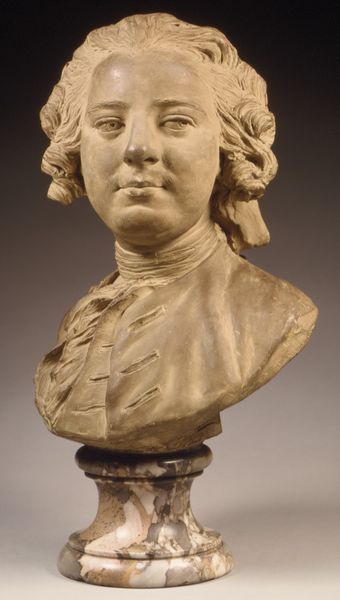
ceramic, porcelain, sculpture
#
portrait
#
sculpture
#
ceramic
#
porcelain
#
sculpture
#
decorative-art
#
rococo
Dimensions: Overall (confirmed): 12 5/8 x 10 1/2 x 5 5/8 in. (32.1 x 26.7 x 14.3 cm)
Copyright: Public Domain
Curator: I find myself immediately drawn to the light reflecting across its surface. There's an almost liquid quality to the porcelain. Editor: Indeed. We are looking at a porcelain bust of Louis XV, crafted in Tournai between 1751 and 1761. It’s currently housed at the Metropolitan Museum of Art. What strikes me is how this medium, typically associated with delicate tableware, is used to convey power and authority. Curator: Precisely! The tension between the medium and the subject creates a fascinating dialogue. Porcelain, historically linked with feminine virtue and aristocratic leisure, here portrays a male monarch, encased in military attire. Editor: Absolutely. We can think about what this bust might signal regarding the King's carefully cultivated image, and the blurring of gender roles within the aristocracy. Note, too, how the folds of the drapery aren't just decorative flourishes; they almost visually amplify his commanding presence. It certainly underscores the rococo era’s fondness for extravagance. Curator: But is this a commentary or endorsement? By utilizing porcelain – with its inherent fragility and implications of global trade fueled by colonialism– does this bust critique or reinforce the socio-political structure of the time? The material becomes a signifier of the king's power as much as it is a statement of the injustices inherent in the extraction of that power. Editor: I see your point, but I’m captivated by how the sculptor achieves such realism and refinement using such a challenging medium. The sharp details in his facial features, the gentle curve of his wig, all meticulously rendered. These choices offer the impression of the individual behind the royal persona. Curator: The personal *within* the political, that’s what fascinates me! The act of memorializing a figure like Louis XV through a traditionally "delicate" medium provides so much to contemplate, particularly about constructions of power and privilege during that era. Editor: I agree. It’s an excellent example of the Rococo style and porcelain sculpture techniques of the 18th century, but equally significant is the cultural narrative it reveals. Curator: Exactly, It serves as a powerful reminder that art and material culture, regardless of period or style, do not exist in a vacuum but reflect complex networks of social and historical power.
Comments
No comments
Be the first to comment and join the conversation on the ultimate creative platform.
